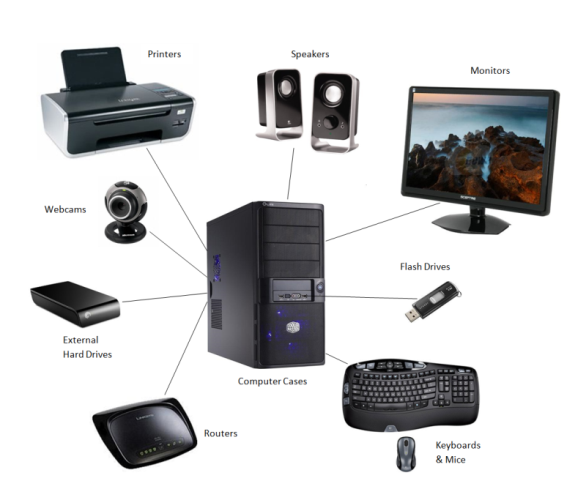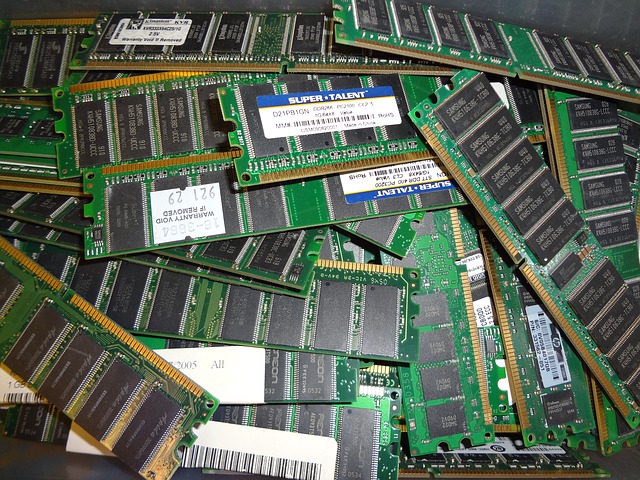What is computer memory
Memory is the basic component of a computer. This is the computer's internal storage area. In order to process the central processing unit (CPU), input data and instructions are stored, which is stored in memory. The data and instructions stored in the memory are processed, and the output is obtained. So memory is an essential part of computer.
Data Representation
The data stored in the memory is converted to 0 or 1 as 0 and 1 are jointly called binary digits. In essence, these are also called bits. This bit computer is the smallest unit to measure the space occupied by memory.
8 Bits = 1 Bytes
1024 Bytes = 1 Kilobyte (1 KB)
1024 KB = 1 Megabyte (1MB)
1024 MB = 1 Gigabyte (1 GB)
1024 GB = 1 Terabyte (1 TB)
Type of Memory
- Primary Memory (Main memory)
- Secondary Memory (Auxiliary Memory)
Primary Memory
Memory is the most important part of the computer where data, information, and programs are present during the process and available immediately if required. This memory is unstable memory because the data written in it erases when the computer is switched off or the electricity Primary Memory is called. This is also called primary memory or main memory.
primary Memory is mainly of two types
- RAM (Random Access Memory)
- ROM (Read Only Memory)
RAM-(Random Acess Memory)
This is the most used memory in the computer. This is a temporary memory, i.e. if the supply of power is stopped, the data stored in it also ends. As the name implies, data can also be read from any means of random access memory, it is not necessary to read the order. This makes reading and writing data intensify. RAM is a space, where data loads and works.
RAM contains 64 MB, 128 MB, 256 MB, 512 MB, 1 GB etc. Ram is mainly of three types.
- DRAM (Dynamic RAM)
- SRAM (Static RAM)
- Synchronous RAM
DRAM-(Dynamic RAM)
Dynamic RAM is briefly called DRAM. The most common DRAM in RAM is required and it is necessary to refresh it quickly. Refresh means here is to make the chip a disadvantage, it refreshes almost thousands of times in a second, and due to being refreshed every time it erases the subject matter first, due to its rapid refresh, its speed Are less.
SRAM-(Static RAM)
Static RAM is a RAM which is less refreshing. Due to low refresh, this keeps the data in memory more time. S-RAM is faster and more expensive than Darem.
Synchronous RAM
Synchronous RAM is faster than DRAM. The reason for its fast speed is that it is the CPU. The clock is refreshed according to the speed. That is why they transfer data faster than DRAM.
ROM-(Read Only Memory)
The full name of Rome is Reed Online Memory. This is Permanent Memory which is programmed to store at the time of computer creation. Store programs cannot be converted and destroyed in this storage, they can be read-only. So this memory is called read-only memory. Data stored in Rome is not destroyed even after the computer has been switched off. Therefore, Rome is called non-volatile or permanent memory. There are different types of Rome which are the following.
- PROM
- EPROM
- EEPROM
PROM-(Programmable Read Only Memory)
It also has permanent memory. Once the program has burned the program instruction it can not be changed. Then he behaves like ordinary ROM.
EPROM-(Erasable Programmable Read Only Memory)
This is also a permanent memory like PRAM. But the process of burning can be repeated with the help of ultraviolet rays.
It is also called ultraviolet EPROM.
EEPROM-(Electrically Erasable Programmable Read Only Memory)
The full name of EEPROM is Electrical Programmable Read Only Memory. New technology is also EEPROM, in which the program can be erased from the lawful method of memory.












0 Comments